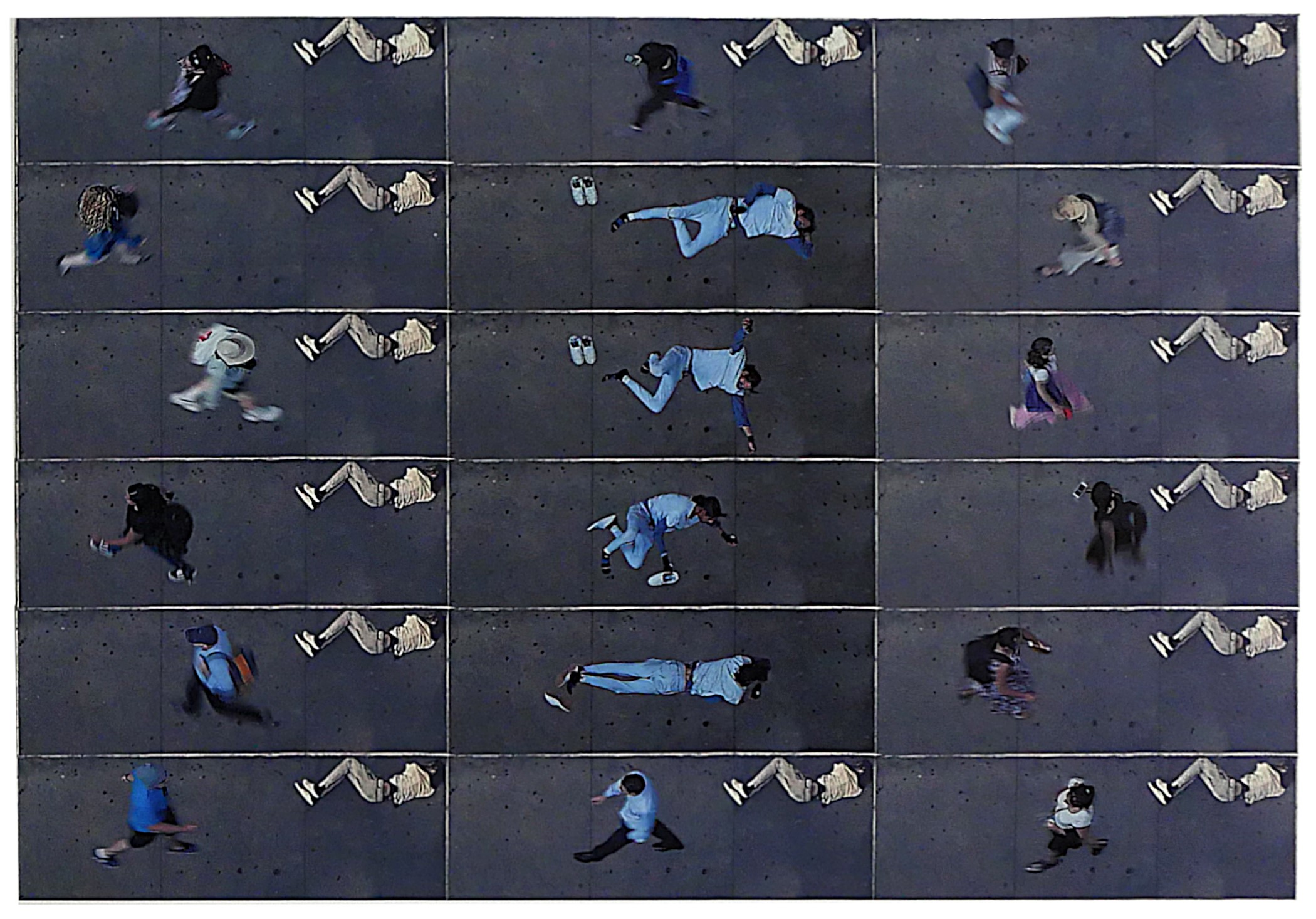If the Enlightment is recognized for an outstanding intellectual and philosophical development, its emergence coincided with theories “from another time”. In her review (1) on “contagions, public health and social links in the United Kingdom during the 18th century”, French sociologist Anne Marcovich recalls the principle of the so called “intermediary space”, defended by JC Lettsome (1744-1815). Associating air to a material medium of “substances emanating from bodies“, JC Lettsome expanded his conclusions beyond the sole medical prescription to a set of social rules combined with moral and ethical guidelines. Arguing for a balance imposed by the laws of Nature, Morality and Reason, a minimal physical distancing was required in the public space, considered as a crucial factor to control public order and security. “From another time”, indeed, but strangely echoing new habits that could lead to critical urban developments.
Defying all humanitarian principles, the post-Covid world emerges without translating into practice our expectations for a more sustainable environment. The same causes producing the same effects, periods of contaminations and clusters are expected to punctuate our lives. The relation between urban space and epidemic is not new. Pasteur, Koch and others promoted air circulation as a condition for a better health. Le Corbusier ideas were motivated by a hygienist conception of cities often considered as excessive (2). But a new paradigm is now emerging. During centuries, urban spaces provided protection to people gathering in case of danger, encouraged by their gregarious instinct. Yi-Fu Tuan, counting amongst the most influential humanistic geographers, explains that spaces are perceived and organized by senses. They are the realms in which direct experience can occur, representing the potential for movement and for activity (3). Dramatically, Yi-Fu Tuan’s vision is now contradicted. To stay safe, we need to stay at home. Public space is not only becoming a threatening territory due to unknown asymptomatic contaminants. It needs to be cleaned; but cleaning also means purifying and this purification recalls the excesses of theories “from another time” resulting in a fear of the city. New social relations could be enforced, promoting security at the expense of freedom. Spaces incorporate nudges occurring on a subliminal level (4). The defensible space theory (5) will be supported by those willing to link health protection to morality guidelines showing a fertile ground for gated communities (6).
Public space enabled a deepening of social relations; we are now asked to avoid it to save lives. As a territory where vulnerabilities can be either relieved or exacerbated, such critical development endangers urban resilience. Cities may differ but vulnerability doesn’t. Ilan Kelman & Al (7), defines vulnerability as being more than a state but a process referring to the values, ideas, behaviors, and actions that have led to characteristics such as fragility, weakness, exposure, and susceptibility and that could perpetuate or absolve these issues. Such process bears a universal truth, be it in highly developed northern hemisphere cities or in so-called developing countries.
Citizen’s associations and NGOs’ efforts to promote an ethic of care (8), already struggled with a discouraging indifference before the epidemic struck. Superseding politicians, they are committed to providing vulnerable people with services answering their basic needs. Will they be able to resist to the way we will perceive public space? We are bound together in a community of shared obligations. Forgetting to interact with each other, to build together, could become a tipping point with devastating consequences for urban resilience.
Chelsea, NYC, 24th street compiles 18 pictures from 33 photo shootings taken from my window during the rush hours on a summer day in 2019. This work questions our collective ability to address vulnerability issues seen in the context of our urban space’s perception and our capacity to interact. At the periphery of the picture, 14 persons walk through the street, paying no attention to a sleeping young man, probably homeless, seeming to merge into the sidewalk. Their unwillingness to stop and to care is emphasized by the blur, as a troubled feeling on the unequal distribution of power and resources in our society. In the center of the picture, the young man looks to “come back to life”, wakes up, moves, stretches, and lies again on the ground.
(As part of the question on the relationship between human behavior and urban space, a series of 5 diptychs on the subway spaces pre and post Covid can be seen here)

- https://www.persee.fr/doc/sosan_0294-0337_1984_num_2_2_967
- https://www.businessinsider.com.au/le-corbusiers-plan-voisin-for-paris-2013-7
- https://tspace.library.utoronto.ca/bitstream/1807/33977/1/Dion_Nicholas_M_201211_PhD_thesis.pdf
- https://globalhandwashing.org/incorporating-nudges-into-covid-19-communication-and-prevention-strategies/
- http://ecommons.udayton.edu/soc_fac_pub/30
- https://halshs.archives-ouvertes.fr/halshs-00291711
- https://link.springer.com/article/10.1007/s11069-016-2294-0
- https://www.youtube.com/watch?v=VAbJ4aVpbEg